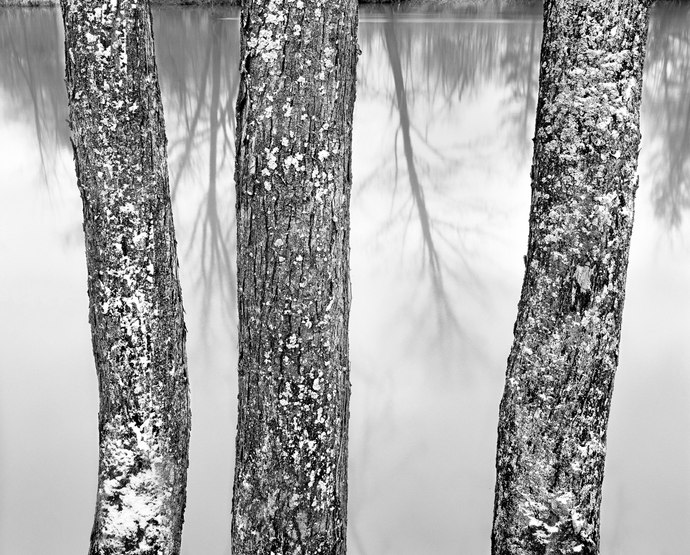In 1753, George Washington passed by this location, traveling along the Venango Path, an ancient portage trail carved by the Seneca, Onondaga, and Cayuga People and migrating herds of bison. French Creek, named by Washington, marked the western edge of early French and English expansion. In the 19th century, as homesteaders journeyed to the far west, they detoured around this heavily forested region of northwestern Pennsylvania, which remained a sparsely settled wilderness between Lake Erie to the north and the creek's confluence with the Allegheny River to the south.
Today, with its rich and well-preserved ecological resources, French Creek has the highest biodiversity of any watershed in the northeastern United States. Over time, though, this once-clear river has turned milky and opaque. Mining, development, and agriculture have diminished its historically pristine water quality.
Along this peaceful stretch stand three lichen-covered trees. Their trunks are etched in icy relief by the northerly winds of a November storm and the onset of a long winter characteristic of this upland snowbelt. The river's rich riparian loam is ideal for growing these northern hardwood trees – middle-aged with their fissured bark – that naturally flourish along the riverbank's wetlands. Their trunks and limbs are pasted with snow intermingled with lichens, a fertile partnership of fungus and algae, attracted by dampness, anchored by the bark's crevices, and fed by the sunlight the trees' open structure provides.
- James Baker

